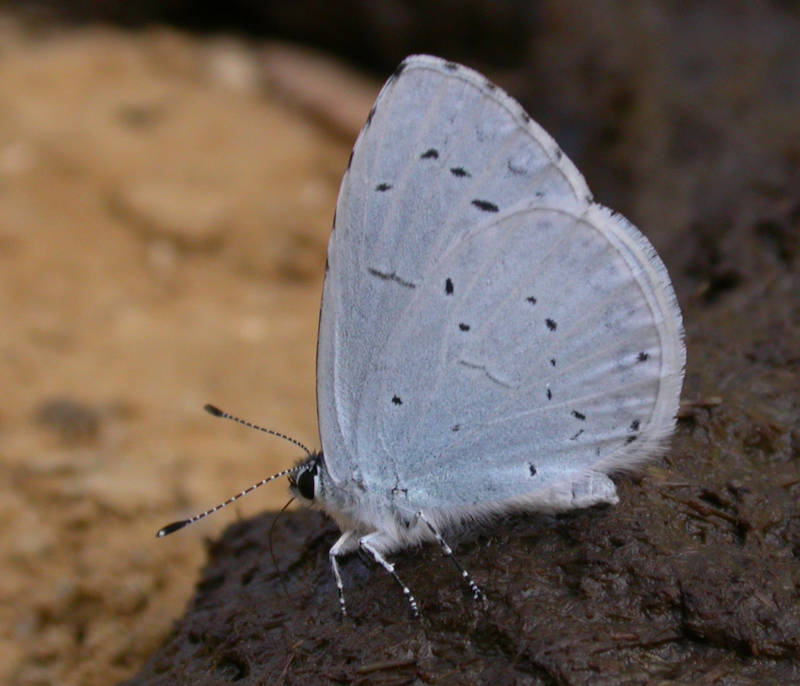Holly Blue
Celastrina argiolus
Checklist Number61.012 [B&F: 1580]
Verification
Record requires retention of specimen until confirmed, and may require dissection. Consult with CMR if unsure
Classification
| Family: | Lycaenidae |
| Subfamily: | Polyommatinae |
| Genus: | Celastrina |
| Species: | argiolus |
| Authority: | (Linnaeus, 1758) |
In England and Wales this species is widespread and common, south of a line running from Cumberland in the west to County Durham in the east; also found on the Isle of Man and throughout Ireland, but absent from Scotland except as a scarce vagrant. A frequent visitor to gardens, it is doing well and the distribution is spreading northwards. This species is renowned for fluctuating wildly in numbers, forming a predictable cycle over a few years, believed to be caused by parasitism from the wasp Listrodomus nycthemerus.
In Hampshire and on the Isle of Wight widespread and common. Wingspan 26-34 mm. Larva feeds on Holly, Ivy, Gorse, Dogwood, Spindle and Alder Buckthorn.
In Hampshire and on the Isle of Wight widespread and common. Wingspan 26-34 mm. Larva feeds on Holly, Ivy, Gorse, Dogwood, Spindle and Alder Buckthorn.
